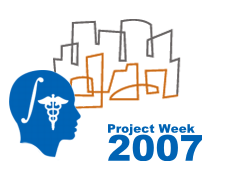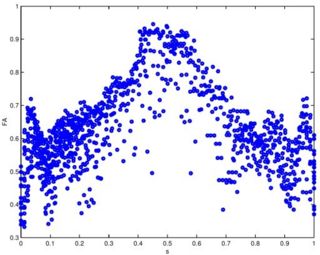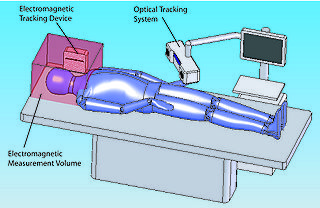Difference between revisions of "Projects/Structural/2007 Project Week EMSegmentation Validation"
| Line 22: | Line 22: | ||
<h1>Approach, Plan</h1> | <h1>Approach, Plan</h1> | ||
| − | + | The validation study is based on a statistical comparison with results from earlier implementations of the EMSegment algorithm. The study will be carried out by members of the Psychiatry Neuroimiging Laboratory (PNL) at Brigham and Women's Hospital, on their data, using the newly developed command line version of the EMSegment algorithm. Kitware will provide software support and assist if problems arise with the results. Details are provided in the reference below. Our plan for the project week is to train the PNL staff on use of the new EMSegment tools, coordinate the validation study, and work out any bugs/interface problems as early as possible. | |
</div> | </div> | ||
Revision as of 14:58, 7 June 2007
Home < Projects < Structural < 2007 Project Week EMSegmentation Validation Return to Project Week Main Page |
Key Investigators
- Kitware: Brad Davis
- BWH: Sylvain Bouix
Objective
Our goal is to begin a validation study that will establish the accuracy and dependability of the Slicer3 EMSegment module. This objective is part of a larger, ongoing development effort for this module.
Approach, Plan
The validation study is based on a statistical comparison with results from earlier implementations of the EMSegment algorithm. The study will be carried out by members of the Psychiatry Neuroimiging Laboratory (PNL) at Brigham and Women's Hospital, on their data, using the newly developed command line version of the EMSegment algorithm. Kitware will provide software support and assist if problems arise with the results. Details are provided in the reference below. Our plan for the project week is to train the PNL staff on use of the new EMSegment tools, coordinate the validation study, and work out any bugs/interface problems as early as possible.
Progress
Software for the fiber tracking and statistical analysis along the tracts has been implemented. The statistical methods for diffusion tensors are implemented as ITK code as part of the DTI Software Infrastructure project. The methods have been validated on a repeated scan of a healthy individual. This work has been published as a conference paper (MICCAI 2005) and a journal version (MEDIA 2006). Our recent IPMI 2007 paper includes a nonparametric regression method for analyzing data along a fiber tract.
References
- Fletcher, P.T., Tao, R., Jeong, W.-K., Whitaker, R.T., "A Volumetric Approach to Quantifying Region-to-Region White Matter Connectivity in Diffusion Tensor MRI," to appear Information Processing in Medical Imaging (IPMI) 2007.
- Corouge, I., Fletcher, P.T., Joshi, S., Gilmore, J.H., and Gerig, G., "Fiber Tract-Oriented Statistics for Quantitative Diffusion Tensor MRI Analysis," Medical Image Analysis 10 (2006), 786--798.
- Corouge, I., Fletcher, P.T., Joshi, S., Gilmore J.H., and Gerig, G., Fiber Tract-Oriented Statistics for Quantitative Diffusion Tensor MRI Analysis, Lecture Notes in Computer Science LNCS, James S. Duncan and Guido Gerig, editors, Springer Verlag, Vol. 3749, Oct. 2005, pp. 131 -- 138
- C. Goodlett, I. Corouge, M. Jomier, and G. Gerig, A Quantitative DTI Fiber Tract Analysis Suite, The Insight Journal, vol. ISC/NAMIC/ MICCAI Workshop on Open-Source Software, 2005, Online publication: http://hdl.handle.net/1926/39 .

